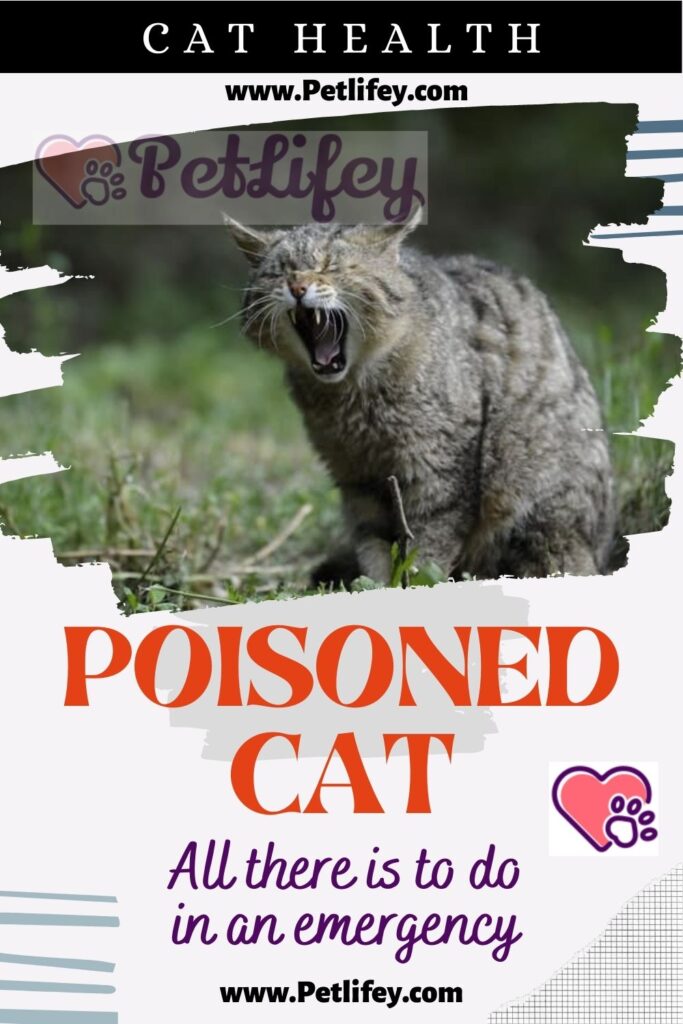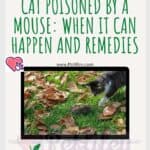
The cat must always taste everything but what he eats is not always good for him: here’s what to do when our cat is poisoned by toxic substances.
The cat is a curiosone, you know: he must taste, discover and know everything around him. Often, however, not everything he tastes is healthy for his health, even at home, the safest place, he could come into contact with substances that can cause him intoxication. This is why it is important to know the symptoms of probable poisoning and what to do to immediately run for cover, before the situation precipitates.
The cat: a tender ‘nosy’
Those who do not have a cat at home cannot fully understand how curious they can be and how far their desire to discover often leads them to get into very dangerous situations. They can easily come into contact with toxic, poisonous substances, not only contained in cleaning detergents and insecticides but also plants that are poisonous for cats and foods that a cat should absolutely avoid. And unfortunately more and more frequently we hear reports of various attempts, often successful, to poison dogs and cats with suspected poisoned morsels.
If the cat is at risk of losing his life it is above all due to his innate exploratory instinct: this is what leads them to taste everything they find not only at home but also outside. It is of fundamental importance for the owner, but also for those who want to help a poor cat who feels bad in the street, to recognize the symptoms of a poisoning to intervene in a timely manner and above all before the poison definitively enters the circulation with consequences. often lethal.
Poisoned cat: the symptoms to recognize
There are signs to tell if your cat is sick, but it won’t be easy to spot them as they will likely try to escape you and hide just when they need help most. Perhaps by contacting the trusted veterinarian on the phone, he will himself indicate when it is appropriate to cause him to vomit or if to act differently. Our primary, and not easy, task will be to recognize the symptoms and explain them in detail to the veterinarian or the nearest veterinary emergency room. Usually a poisoned cat exhibits the following symptoms:
- difficulty in breathing,
- He retched,
- diarrhea,
- sneezing and coughing (as if wanting to expel something),
- excessive salivation,
- involuntary seizures, spasms and contractions,
- bluish tongue,
- dilated pupils,
- loss of dark urine,
- chills.
Once some of these symptoms have been recognized, it is time to do something: this is how we must act to save the life of a poisoned cat.
Poisoned cat: the right moves to save him

Once we recognize the symptoms or, perhaps after having imagined what the cat could have ingested in a moment of our distraction, we move on to take measures. The first thing to do is to put yourself in a ventilated area and have water available, so if we are at home, let’s take it to the bathroom or kitchen to have it at hand. If we are not in a house or do not have running water available, it is important to know that, before knowing the ingested substance, it is not necessary to give it any food, milk, salt or oil. During the rescue operation some cats lose consciousness, while others, frightened by the situation and their state of health, tend to be aggressive and violent cats: so we wear gloves or long sleeves to avoid scratches and bites.
If we are sure of what he has ingested and less than two hours have passed since contact with the substance, we induce vomiting with hydrogen peroxide, to be injected into the cat’s mouth with a syringe without a needle. The recommended dose is 5 ml (about a teaspoon) for every 2 kg of the cat’s weight: so if a cat weighs about 4 kg, 10 ml will be needed. The operation must be repeated about three times (maximum) at 10 minute intervals. Alternatively, we can use activated charcoal: one gram for every 450 grams of the cat’s weight. The powder must be diluted in very little water, to create a pasty cream to be injected into the cat’s mouth with a syringe without a needle, for about 4 times at intervals of 2-3 hours.
If, on the other hand, we are not sure which medicine he has ingested, we do not know a precise dose and we are not able to know if that particular substance is toxic or not, we cannot make him vomit. In fact, in some cases, putting the substance back into circulation could do even worse damage: this happens with acid poisons, alkalis and petroleum derivatives. For this it is necessary to ask the veterinarian for precise instructions. Furthermore, if we are sure that the substance has been ingested more than two hours before and the cat has not shown any signs of discomfort, it is good not to try to make him expel it. In practice, if we notice that the cat is fine there will be no need to intervene. However, let’s take note of some fundamental factors:
- the cat is conscious,
- has no difficulty swallowing,
- we are sure that the poison is not acidic or toxic,
Where are the most dangerous poisons found? In white spirit, household cleaning detergents such as bleach, lighter fluid, gasoline and kerosene. In some cases it is possible to counteract the poison with milk, but it is always better to ask the expert for information, providing him with all the necessary information on the ingested poison (if we have any, of course).
Poisoned cat: what to do after the crisis
Once the worst seems to have passed and the cat has overcome the crisis, it is time to put him back on track and mainly to hydrate him: if he has difficulty swallowing, let’s inject water into his mouth with another syringe without a needle. This operation will help the kidneys to resume their regular functioning. We also make sure that there are no traces of poison left on the fur: if it were a sticky substance, which got stuck in the hair, we immediately cut the tuft without hesitation: better a hairless cat rather than run the risk that it can taste the poison again, licking itself. The fact that the cat is better does not mean giving up the visit to the vet, just to make sure that all the poison has now been expelled.
Unfortunately, cat poisoning can be a frequent episode: the best thing is to stay calm and follow all the instructions provided by our veterinarian with clarity.






